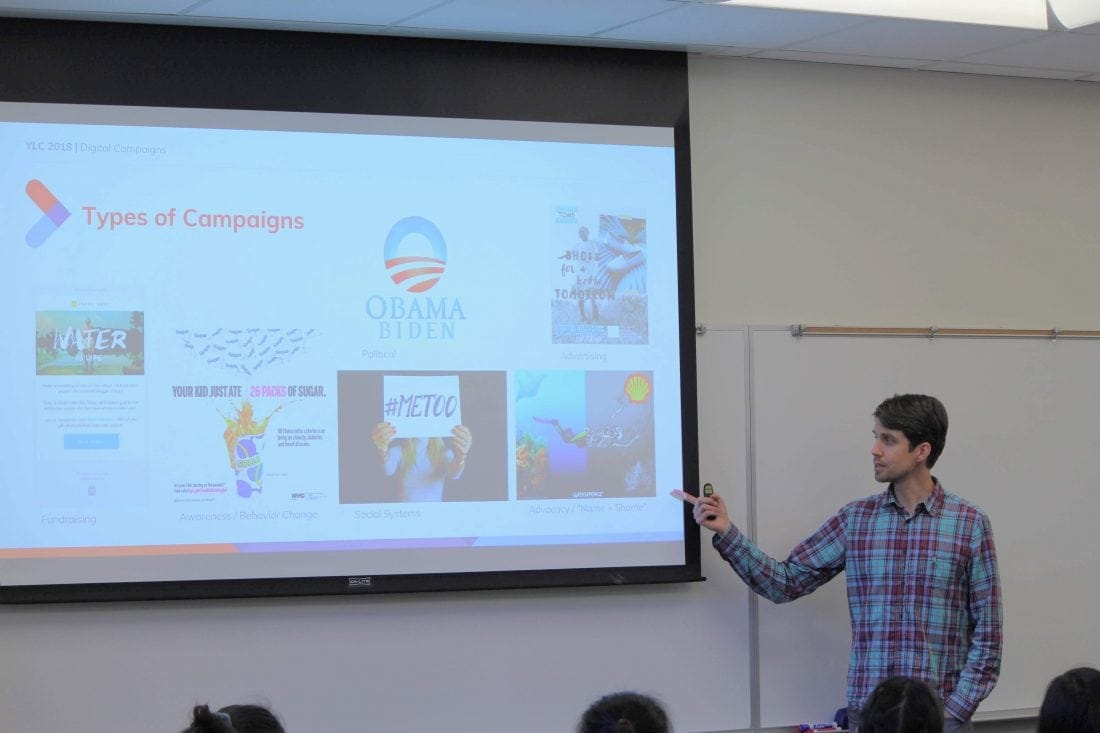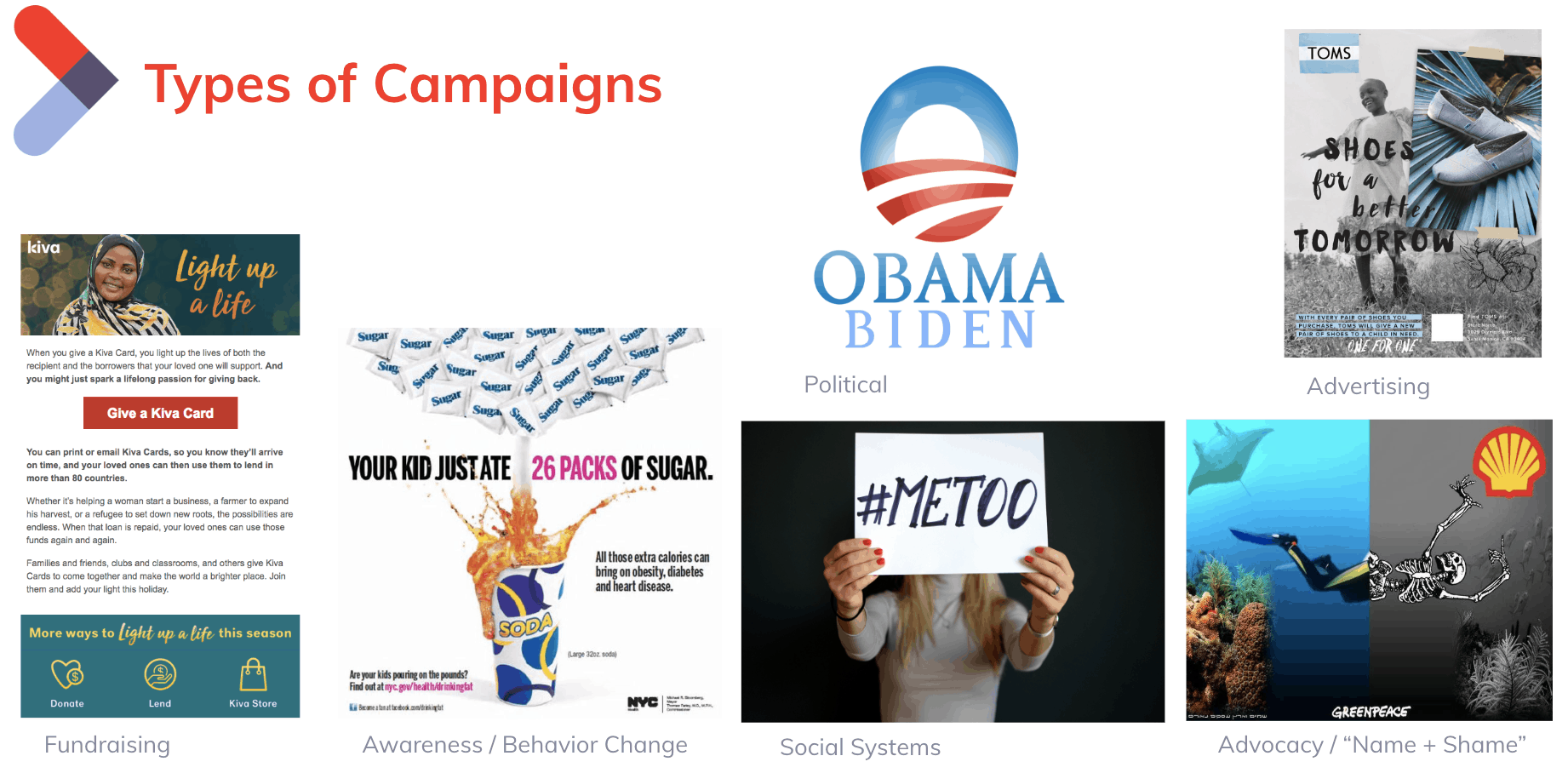
Campaign Types to Consider for Your Nonprofit
I was asked to facilitate some workshops about digital campaigns at the Youth Leadership Conference at Stanford University. The event brought together 100 high-achieving high school students to learn leadership skills and strategies to promote social change.
As I started mapping out my presentation for youth who were new to campaigning and organizing, I realized that I needed to take a step back and first answer the question: uhh…what is a campaign anyway?
As you may have noticed, the word “campaign” is used to describe vastly different initiatives with equally different goals. Here are six types of campaigns with short descriptions of their goals — depending on how you slice it, there could be even more:
- Fundraising – raising money to support an organization (also check out these 6 steps to a successful fundraising campaign)
- Awareness or Behavior Change – increasing knowledge of an issue with the goal of proactively changing people’s behavior (read more about how to build a behavior change campaign here)
- Social Systems – uncover and change the deep-rooted causes of injustice
- Political – encouraging voters to support or oppose a particular candidate or ballot measure
- Advocacy – mobilizing large numbers of people to take actions that compel or force a corporation or “target” to change their behavior
- Advertising – motivating people to buy a product or service

That’s a lot of different “campaigns”!
In addition to campaign types, there is a wide range of campaign channels that can be considered campaigns. There are also email marketing campaigns, pay-per-click (PPC) campaigns, out-of-home campaigns (e.g. billboards), social media campaigns, event promotion campaigns, print campaigns… the list goes on and on.
A campaign can be run by one person or thousands of people. The variations of a campaign are endless!
What’s the deal? Why do we use the word “campaign” to describe such different work? To answer that question, we need to consider how the goals of all campaigns are similar. Here’s what I came up with:
A campaign aims to influence someone to do something.
Let’s test whether influence is at the heart of the campaign types that we listed above:
- What was the Obama/Biden political campaign trying to influence people to do? Vote for them.
- What is Kiva’s fundraising campaign trying to influence people to do? Invest money in a life-changing entrepreneur.
- What is the #metoo campaign trying to influence people to do? Raise awareness about the widespread prevalence of sexual harassment and assault in our society.
- What is New York City’s awareness campaign trying to influence parents to do? Stop buying soda for their kids.
- What is Toms Shoes trying to influence people to do? Buy their shoes, which will also donate a pair to a child in need.
- What is Greenpeace’s campaign trying to influence Shell Oil to do? Stop polluting the oceans.
As you can see, the goals of campaigns are often very different, but they’re all trying to do the same thing: influence someone to do something.
In all my years of campaigning, I’ve come up with nine tips that should be applied to every campaign, no matter what you are trying to influence someone to do:
- Campaign on an issue that you are passionate about! If the campaign doesn’t excite you (or make your blood boil), then it’s unlikely you’ll stay motivated.
- One big campaign may incorporate (and often should include) multiple types of smaller campaigns to achieve its end goal. For example, most political campaigns include advertising and fundraising.
- All of your campaign tactics should bring you closer to your campaign goal — never lose sight of it.
- Empathize and think through the eyes of your target audience.
- Keep thinking through messaging ideas until you find one that is “sticky.” The best formula I’ve read for this is outlined in “Made to Stick” by Chip and Dan Heath.
- Every campaign needs a call-to-action or “ask” — no matter how small or big.
- We live in a multi-channel, multi-device world. Use them all!
- Set specific, measurable, achievable, relevant, and time-based goals. Always be SMART when you campaign.
- “Failure” means it’s time to pivot your strategy, not give up! Just like most famous entrepreneurs who had multiple failures before their big success, campaigners often struggle for years to make incremental progress before influencing a tipping point.
By following these nine steps when building your next campaign, you’ll be well on your way to influencing someone to do something. And if you’re reading this blog, it’s probably to help make the world a better place.
Are you looking for some help to design and execute a powerful and effective campaign? Drop us a line!